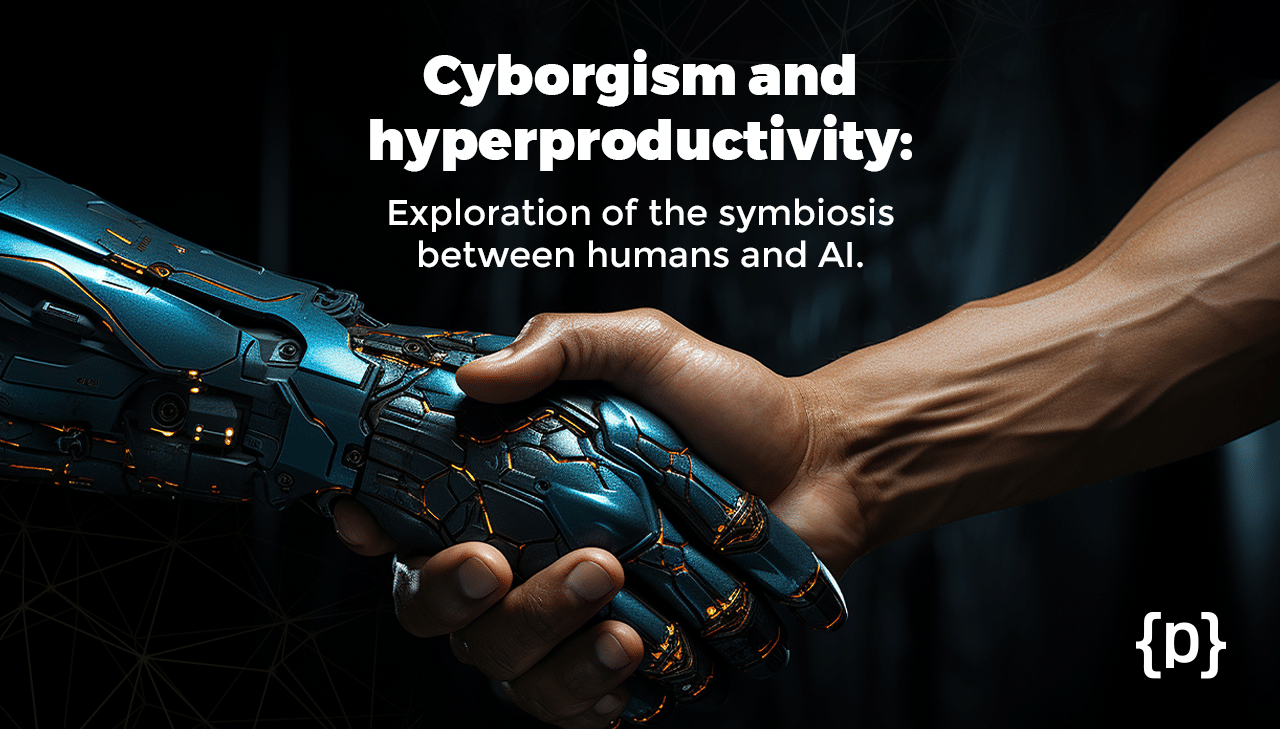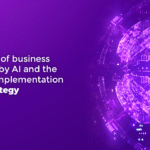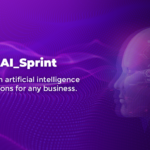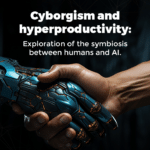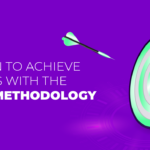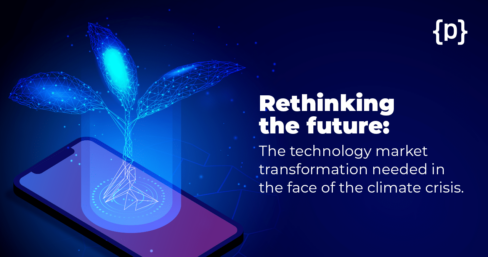In the ever-evolving technological landscape of the 21st century, human and artificial intelligence (AI) are becoming increasingly integrated and complex. The concept of cyborgism, which unites humans and machines in a productive symbiosis, is gaining importance.
As Artificial Intelligence (AI) transforms the business landscape, adopting this innovative technology presents unique challenges for organizations. While AI tools offer significant opportunities to improve efficiency, optimize processes, and increase productivity, successful implementation requires a careful and strategic approach. In this context, we will explore the challenges of adopting AI in the enterprise environment and how organizations can address them to maximize the benefits of this technological revolution.
In this article, we’ll explore the intersection of cyborgism and hyperproductivity, focusing on how AI tools enhance our ability to perform tasks more flexibly, conquer new horizons, and find answers to familiar challenges.
The emergence of cyborgism
The term “cyborg” is a combination of the words “cybernetic organism” and refers to a combination of biological and technological elements. Although this term became popular in science fiction, cyborgism is becoming more popular thanks to advances in artificial intelligence (IA).
In this context of AI, we find the term cyborgism. It is a representation of technology as an extension of human capabilities.
AI tools act as an extension of our cognitive and productive capabilities. By analyzing large amounts of data in real-time, AI can identify complex patterns that would be nearly impossible for the human brain to process. That means significant benefits in such main areas as medicine, finance, generative manufacturing, software development, and science.
As artificial intelligence continues to evolve, we are witnessing a growing intersection between the capabilities of technology and the innate abilities of humans. This convergence is opening the door to the creation of advanced cyber-physical systems, in which the synergy between humans and AI makes it possible to achieve feats that would be virtually unattainable by either side alone.
At the heart of this progress is the complementarity of capabilities. While humans possess intuition, creativity, empathy, and the ability to make contextual decisions, AI excels at processing massive amounts of data in real time, identifying patterns, and performing complex analyses with extraordinary precision. This union of characteristics fosters a symbiosis in which each part complements the weaknesses of the other, resulting in a combined capability that transcends individual limitations.
Creating cyber-physical systems that combine the capabilities of technology with human capabilities is an exciting and complex frontier. This journey requires continuous reflection on maximizing the benefits of this symbiosis while addressing the challenges that will arise along the way.
However, as we delve deeper into the age of artificial intelligence, we also face some challenges that require careful attention. Addressing the challenges of AI adoption has become a priority as ethical, social, and practical issues emerge amid rapid technological progress.
As we explore the promising horizons offered by AI, we must also confront questions about data privacy, the impact on employment structures, the reliability of automated decisions, and the balance between innovation and accountability. In this context, we will take a closer look at the complex challenges associated with integrating AI into different areas of our society and how we can address them.
Some well-known challenges to AI adoption
Committed leadership: Leadership plays a critical role in driving AI adoption. Leaders need to be aligned with the goals, show enthusiasm, and clearly communicate the vision. This will help build trust and create an environment conducive to change.
Education and training: Investing in education and training is critical. Offering AI training programs to employees at all levels helps build internal competencies and reduce technology anxiety.
Strategic Partnerships: Partnering with AI experts and technology companies can accelerate adoption. Strategic partnerships can provide technical support and valuable insights to ensure a smooth implementation.
Iterative approach: Rather than an “all or nothing” approach, an iterative strategy allows organizations to test and optimize AI solutions incrementally. This reduces the risk of significant business disruption.
Ethics and transparency: Establishing clear ethical guidelines for the use of AI demonstrates corporate responsibility and builds trust with customers and stakeholders. Transparency in data collection and usage practices is critical.
Expert View
Successful adoption of AI in the enterprise is not just about implementing the technology but also preparing the people and processes to embrace the change.
Overcoming the challenges of AI adoption requires a holistic approach that includes committed leadership, ongoing training, and an adaptive strategy.
Just as the Internet reshaped business models and opened new market opportunities, AI is reshaping organizations’ operational and strategic capabilities.
Our commitment to proactively adopt AI within Performa_IT is based on the principle that we recognize AI as a lever to accelerate processes and deliver hyper-productivity to our customers.
In addition to improving internal efficiencies, the company delivered more agile solutions and impactful results to customers in less time using intelligent algorithms and predictive analytics. We recognize the transformation we can make by embracing AI as a strategic ally. By incorporating AI into our processes, we aim to optimize our services and achieve operational excellence.
But it’s important to recognize that the journey to successful AI adoption is not without its challenges. The integration of AI will require careful attention to ethical, legal, and social issues, just as the Internet brought concerns about security, privacy, and cultural change. This holistic approach not only promotes the ability to maximize AI’s benefits but also ensures responsible, balanced, and sustainable change.
As we enter a new era of business driven by AI focused on the importance of not just agreeing to change but actively shaping it. The convergence of technology and human capabilities creates a fertile ground for innovation, improvement, and sustainable growth, enabling organizations to reach new heights of success in an increasingly competitive and dynamic business scenario.
